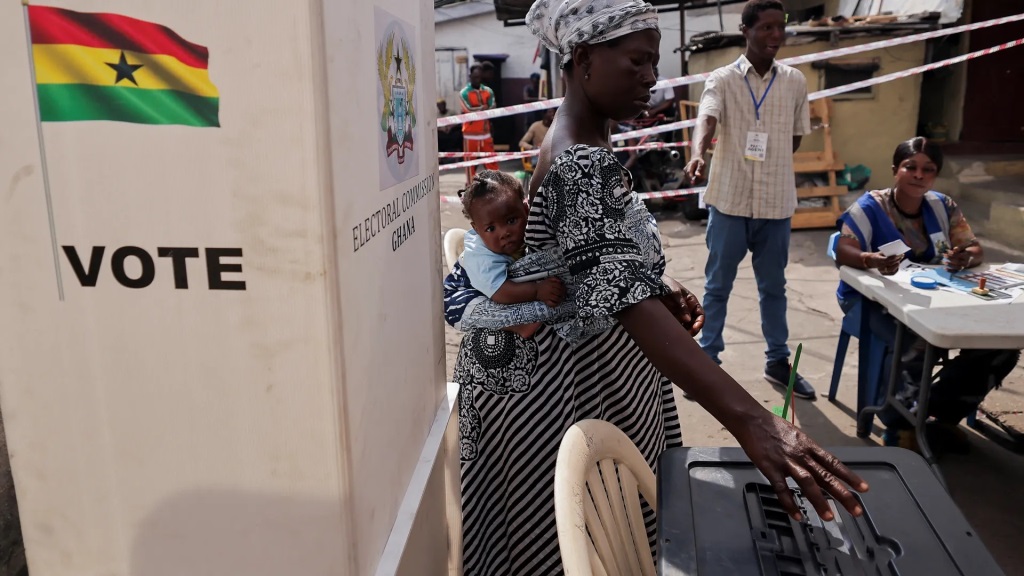Feature/OPED
Four Ways FMCG Distributors Can Use Embedded Finance to Grow Trade Within Supply Chains

By Ope Adeoye
You have a shop in the neighbourhood or market selling things like milk, noodles, sugar, etc. Now imagine that your plug for Nestle, Unilever or Flours Mill of Nigeria (FMN) products provides you with a special bank account. “That’s absurd, why?” You say. Let’s take a step back a little…
This distributor has probably done business with you for five, 10 years or more, knows your business, your purchase, sales and payment patterns, and can, in fact, offer financial services better suited to your business.
This is because they know more about you than perhaps the big-name bank you use down the road. For example, when you need to expand your business from one to two shops, your bank is unable to give you the loan to help you do that because, frankly, it can’t tell whether or not you are into what you claim is your business.
Your bank statement does not contain enough information about your business to help them decide and they don’t know what you sell daily, weekly, etc. Or the margins you get on each supply you receive and sell. But, your distributor provides you goods, maybe weekly or even daily, knows the volumes you move and how promptly or not you make payments. Also know the margins in each product. Just like you, they know the business.
If the distributor could finance you to grow your business, you will buy more from him. And sell more. And she in turn will pull more volume from Nestle, P&G, etc. Win-win-win for everyone.
The spoiler? That distributor is not a bank and can hardly do more than give you goods on credit, occasionally. She definitely doesn’t have the liquidity to cater to all of your growth needs.
That’s where embedded finance comes in.
A Forbes article describes embedded finance as “the use of financial tools or services — such as lending or payment processing — by a non-financial provider,” and expanding this, the end goal is to offer customers a payment experience that is likely to keep them loyal and continue doing business through that platform.
Here are four ways the FMCG industry can utilise embedded finance, to offer financial services throughout their supply chain, without having to grow through the overhead of becoming banks themselves.
Credit line to keep goods moving
The supply chain as of today is mostly analogue and it is hard to accurately know in micro details, what role every participant has played. To be clear, a manufacturer or distributor would have records of how much inventory is sold or not, but does it know what moved across different categories of distributors and down to retailers? Not likely. And definitely, not accurately.
Digitizing the workflow creates an integrated ecosystem in which every player becomes visible in the supply chain. This is especially important for players closer to the bottom of the chain, many of whom the FMCG manufacturers would have no direct records of, yet are active participants in getting goods down the last mile and to consumers.
Many of these could rely on physical bookkeeping to track their finances, but when they need a credit line for goods from the same company, showing a track record becomes challenging. Even worse when they buy their inventory through layers and layers of middlemen and sales agents.
A finbox article emphasised that “The digital integration of smaller distributors and local stores through payment solutions, accounting apps, and banking solutions will generate standardized data on transactions within the chain, leading to increased transparency at every stage – tracking goods, inventory management, and sales.”
In essence, offering digital tools that help a retailer to spend, receive and track their money – embedded finance, could allow a 3rd party (or even a bank) have the visibility and confidence to step in to offer credit lines that support the retailer with goods or services (as the case may be), based on their transaction history, which would have been recorded on the platform.
In a practical sense: If a shop owner usually buys N20,000 worth of inventory every week, consistently, and a bank or lender has visibility into this, they are able to step in to help increase the basket size to N30,000.
Needless to say, the more goods the retailer is able to sell, the more the FMCG distributor or manufacturer itself stands to make. With embedded finance – inserting the services of the bank or lender into the (now digital) exchanges between retailer and distributor, we are now able to determine based on transactions; who is qualified for what level of credit line. It becomes possible to have data-driven decision making that keeps retailers in business and possibly expanding and invariably, the company at the top of this chain keeps winning.
Insurance on sales
Insurance is often overlooked in this part of the world and when offered to people, it is not unusual to hear; ‘loss is not my portion’. Yet, losses occur, and perhaps more frequently than many would like to admit.
However, there are instances where insurance is not optional, especially for the transnational movement of goods.
As part of the supply chain experience, insurance protection can be embedded within the solution offered by the FMCG manufacturer or distributor. As usual, an insurance provider needs historical data to determine risk and price it appropriately. The digitization effort creates this trail and makes this possible.
In practical terms: It’s not uncommon for drivers of delivery vans to drive off with goods and cash. Or get waylaid by urchins. Embedded insurance protects against this possibility. But requires digitization to be effective.
There are even more interesting insurance products that can be designed: Imagine a retailer getting money back for inventory they were unable to sell due to external factors? Yes, possible.
A financial bouquet to do more
The account number that ties any dealer in the supply chain to the embedded finance solution, can also be used for any regular banking service. So, when the delivery of Indomie Noodles comes from Dufil and the distributor needs to pay the haulage company, they are able to do so through the embedded finance solution provided by Dufil. They would not need to log into a separate bank account, then make a transfer, or worse still, hand over a wad of cash.
Payment for warehouses, store rent, utilities and even salaries of employees can be done from that account provided by the FMCG company.
A distributor can make all business-related expenses from that single account, making it easy to accurately determine what costs are associated with that business, and how profitable or not it has been.
The good part of this? Because the account is provided by the FMCG company or Distributor, they usually have negotiated “corporate pricing” with the bank or financial service providers… and because they are not in this to make money from banking services, per se, they are able to pass those gains down to the retailer in the form of cheaper services, etc. Imagine sending money for less or buying airtime at a discount because the margins of the bank have been passed to the retailer in the form of incentives.
Integrated payment experiences to eliminate cash
Every distributor and manufacturer knows that cash handling is a big problem and cost. The retailer receives cash from his own customers. The retailer pays the wholesaler or distributor in cash. Everyone has to count, reconcile and move that cash around. Someone pays for the insurance on that cash, someone pays the cashless penalty on that cash, Etc.
With an embedded bank account, the distributor can in one click take payments from the account of the retailer when the time comes to pay.
With an embedded account, customers can pay directly into the account of the retailer versus cash. And these days, they can do that with either cards or transfers.
And the incentive for the Retailer to push this? Every inflow and outflow from that account helps him to create the required data trail through which he can get the credit line with which he can start his 2nd shop or buy more inventory. An unending hamster wheel of growth..
In conclusion
Embedded finance solutions are ready for deployment within days and do not require building from scratch. OnePipe makes it possible for non-financial institutions like FMCG manufacturers and distributors, to offer financial services without becoming fully-fledged providers.
From facilitating credit to offering investment possibilities, each possibility is in itself a full-time job, with requirements varying from tech to operations, regulation, dealing with things like fraud, compliance etc, yet, possible to offer as a single suite through embedded finance. The experiences for customers keep them integral in the supply chain and implementing FMCG expands revenue without ‘investing heavily in the tech to achieve this. What is there not to love about embedded finance?
Ope Adeoye is the Chief Plumber of OnePipe
Feature/OPED
The Future of Payments: Key Trends to Watch in 2025

By Luke Kyohere
The global payments landscape is undergoing a rapid transformation. New technologies coupled with the rising demand for seamless, secure, and efficient transactions has spurred on an exciting new era of innovation and growth. With 2025 fast approaching, here are important trends that will shape the future of payments:
1. The rise of real-time payments
Until recently, real-time payments have been used in Africa for cross-border mobile money payments, but less so for traditional payments. We are seeing companies like Mastercard investing in this area, as well as central banks in Africa putting focus on this.
2. Cashless payments will increase
In 2025, we will see the continued acceleration of cashless payments across Africa. B2B payments in particular will also increase. Digital payments began between individuals but are now becoming commonplace for larger corporate transactions.
3. Digital currency will hit mainstream
In the cryptocurrency space, we will see an increase in the use of stablecoins like United States Digital Currency (USDC) and Tether (USDT) which are linked to US dollars. These will come to replace traditional cryptocurrencies as their price point is more stable. This year, many countries will begin preparing for Central Bank Digital Currencies (CBDCs), government-backed digital currencies which use blockchain.
The increased uptake of digital currencies reflects the maturity of distributed ledger technology and improved API availability.
4. Increased government oversight
As adoption of digital currencies will increase, governments will also put more focus into monitoring these flows. In particular, this will centre on companies and banks rather than individuals. The goal of this will be to control and occasionally curb runaway foreign exchange (FX) rates.
5. Business leaders buy into AI technology
In 2025, we will see many business leaders buying into AI through respected providers relying on well-researched platforms and huge data sets. Most companies don’t have the budget to invest in their own research and development in AI, so many are now opting to ‘buy’ into the technology rather than ‘build’ it themselves. Moreover, many businesses are concerned about the risks associated with data ownership and accuracy so buying software is another way to avoid this risk.
6. Continued AI Adoption in Payments
In payments, the proliferation of AI will continue to improve user experience and increase security. To detect fraud, AI is used to track patterns and payment flows in real-time. If unusual activity is detected, the technology can be used to flag or even block payments which may be fraudulent.
When it comes to user experience, we will also see AI being used to improve the interface design of payment platforms. The technology will also increasingly be used for translation for international payment platforms.
7. Rise of Super Apps
To get more from their platforms, mobile network operators are building comprehensive service platforms, integrating multiple payment experiences into a single app. This reflects the shift of many users moving from text-based services to mobile apps. Rather than offering a single service, super apps are packing many other services into a single app. For example, apps which may have previously been used primarily for lending, now have options for saving and paying bills.
8. Business strategy shift
Recent major technological changes will force business leaders to focus on much shorter prediction and reaction cycles. Because the rate of change has been unprecedented in the past year, this will force decision-makers to adapt quickly, be decisive and nimble.
As the payments space evolves, businesses, banks, and governments must continually embrace innovation, collaboration, and prioritise customer needs. These efforts build a more inclusive, secure, and efficient payment system that supports local to global economic growth – enabling true financial inclusion across borders.
Luke Kyohere is the Group Chief Product and Innovation Officer at Onafriq
Feature/OPED
Ghana’s Democratic Triumph: A Call to Action for Nigeria’s 2027 Elections

In a heartfelt statement released today, the Conference of Nigeria Political Parties (CNPP) has extended its warmest congratulations to Ghana’s President-Elect, emphasizing the importance of learning from Ghana’s recent electoral success as Nigeria gears up for its 2027 general elections.
In a statement signed by its Deputy National Publicity Secretary, Comrade James Ezema, the CNPP highlighted the need for Nigeria to reclaim its status as a leader in democratic governance in Africa.
“The recent victory of Ghana’s President-Elect is a testament to the maturity and resilience of Ghana’s democracy,” the CNPP stated. “As we celebrate this achievement, we must reflect on the lessons that Nigeria can learn from our West African neighbour.”
The CNPP’s message underscored the significance of free, fair, and credible elections, a standard that Ghana has set and one that Nigeria has previously achieved under former President Goodluck Jonathan in 2015. “It is high time for Nigeria to reclaim its position as a beacon of democracy in Africa,” the CNPP asserted, calling for a renewed commitment to the electoral process.
Central to CNPP’s message is the insistence that “the will of the people must be supreme in Nigeria’s electoral processes.” The umbrella body of all registered political parties and political associations in Nigeria CNPP emphasized the necessity of an electoral system that genuinely reflects the wishes of the Nigerian populace. “We must strive to create an environment where elections are free from manipulation, violence, and intimidation,” the CNPP urged, calling on the Independent National Electoral Commission (INEC) to take decisive action to ensure the integrity of the electoral process.
The CNPP also expressed concern over premature declarations regarding the 2027 elections, stating, “It is disheartening to note that some individuals are already announcing that there is no vacancy in Aso Rock in 2027. This kind of statement not only undermines the democratic principles that our nation holds dear but also distracts from the pressing need for the current administration to earn the trust of the electorate.”
The CNPP viewed the upcoming elections as a pivotal moment for Nigeria. “The 2027 general elections present a unique opportunity for Nigeria to reclaim its position as a leader in democratic governance in Africa,” it remarked. The body called on all stakeholders — including the executive, legislature, judiciary, the Independent National Electoral Commission (INEC), and civil society organisations — to collaborate in ensuring that elections are transparent, credible, and reflective of the will of the Nigerian people.
As the most populous African country prepares for the 2027 elections, the CNPP urged all Nigerians to remain vigilant and committed to democratic principles. “We must work together to ensure that our elections are free from violence, intimidation, and manipulation,” the statement stated, reaffirming the CNPP’s commitment to promoting a peaceful and credible electoral process.
In conclusion, the CNPP congratulated the President-Elect of Ghana and the Ghanaian people on their remarkable achievements.
“We look forward to learning from their experience and working together to strengthen democracy in our region,” the CNPP concluded.
Feature/OPED
The Need to Promote Equality, Equity and Fairness in Nigeria’s Proposed Tax Reforms

By Kenechukwu Aguolu
The proposed tax reform, involving four tax bills introduced by the Federal Government, has received significant criticism. Notably, it was rejected by the Governors’ Forum but was still forwarded to the National Assembly. Unlike the various bold economic decisions made by this government, concessions will likely need to be made on these tax reforms, which involve legislative amendments and therefore cannot be imposed by the executive. This article highlights the purposes of taxation, the qualities of a good tax system, and some of the implications of the proposed tax reforms.
One of the major purposes of taxation is to generate revenue for the government to finance its activities. A good tax system should raise sufficient revenue for the government to fund its operations, and support economic and infrastructural development. For any country to achieve meaningful progress, its tax-to-GDP ratio should be at least 15%. Currently, Nigeria’s tax-to-GDP ratio is less than 11%. The proposed tax reforms aim to increase this ratio to 18% within the next three years.
A good tax system should also promote income redistribution and equality by implementing progressive tax policies. In line with this, the proposed tax reforms favour low-income earners. For example, individuals earning less than one million naira annually are exempted from personal income tax. Additionally, essential goods and services such as food, accommodation, and transportation, which constitute a significant portion of household consumption for low- and middle-income groups, are to be exempted from VAT.
In addition to equality, a good tax system should ensure equity and fairness, a key area of contention surrounding the proposed reforms. If implemented, the amendments to the Value Added Tax could lead to a significant reduction in the federal allocation for some states; impairing their ability to finance government operations and development projects. The VAT amendments should be holistically revisited to promote fairness and national unity.
The establishment of a single agency to collect government taxes, the Nigeria Revenue Service, could reduce loopholes that have previously resulted in revenue losses, provided proper controls are put in place. It is logically easier to monitor revenue collection by one agency than by multiple agencies. However, this is not a magical solution. With automation, revenue collection can be seamless whether it is managed by one agency or several, as long as monitoring and accountability measures are implemented effectively.
The proposed tax reforms by the Federal Government are well-intentioned. However, all concerns raised by Nigerians should be looked into, and concessions should be made where necessary. Policies are more effective when they are adapted to suit the unique characteristics of a nation, rather than adopted wholesale. A good tax system should aim to raise sufficient revenue, ensure equitable income distribution, and promote equality, equity, and fairness.
-

 Feature/OPED5 years ago
Feature/OPED5 years agoDavos was Different this year
-
Travel/Tourism8 years ago
Lagos Seals Western Lodge Hotel In Ikorodu
-

 Showbiz2 years ago
Showbiz2 years agoEstranged Lover Releases Videos of Empress Njamah Bathing
-

 Banking6 years ago
Banking6 years agoSort Codes of GTBank Branches in Nigeria
-

 Economy2 years ago
Economy2 years agoSubsidy Removal: CNG at N130 Per Litre Cheaper Than Petrol—IPMAN
-

 Banking2 years ago
Banking2 years agoFirst Bank Announces Planned Downtime
-

 Sports2 years ago
Sports2 years agoHighest Paid Nigerian Footballer – How Much Do Nigerian Footballers Earn
-

 Technology4 years ago
Technology4 years agoHow To Link Your MTN, Airtel, Glo, 9mobile Lines to NIN





















